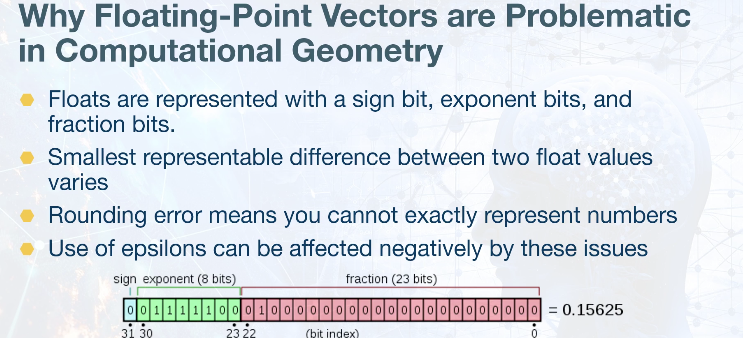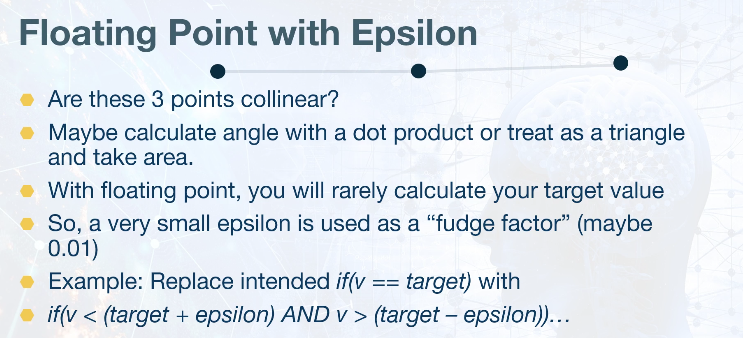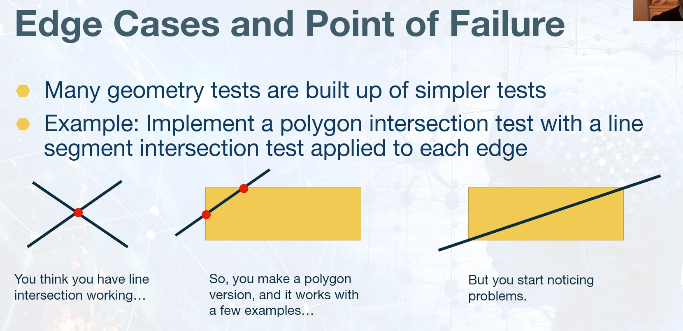What it entails
- Study of algorithms pertaining to geometry
- Motivation for robustness and provable correctness
- Application to discretization
- Point Containment: If a polygon/region contains a test point
- Line Intersection
- Triangulation: Taking a complicated polygon and breaking it down to triangular shapes (think computer graphics)
Floating point vectors problematic

Epsilon solution

Edge cases

Integer Solution
- Converting floats to integers can help support robust computational geometry
- Just multiply each float by some number and cast to an integer (1000 works well for 32-bit ints)
- Floating-point 2d/3d vectors becomes IntVectors
- After computational geometry has been performed, map back to floats
- Conversion to integers can create a lot of overhead and double memory usage.
- Therefore, if possible, perform this outside of game. Bake computational geometry data structures when building your game.
Integer Representation Problem
- Must be careful with multiplications or sums cause it can lead to overflow
- Can often be proven by considering largest allowed integer in equation terms
- To avoid problem:
- Reorder equations terms to avoid overflow
- Process subsets of geometry such that integers fall within a defined safe range
- Use 64-bit integers or even doubles
Key Takeaways
- Use integer-based algorithms when possible
- Good to avoid angle calculations when you can
Segment Intersection



